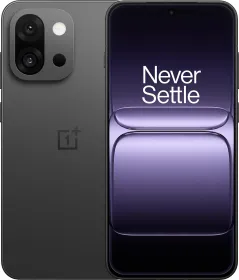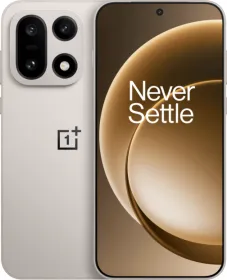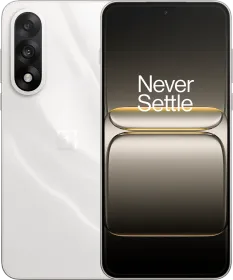Jump To
- OnePlus 13s vs. Xiaomi 15: Design
- OnePlus 13s vs. Xiaomi 15: Display
- OnePlus 13s vs. Xiaomi 15: Performance
- OnePlus 13s vs. Xiaomi 15: Software
- OnePlus 13s vs. Xiaomi 15: Cameras
- OnePlus 13s vs. Xiaomi 15: Battery Life
- OnePlus 13s vs. Xiaomi 15: Connectivity
- OnePlus 13s vs. Xiaomi 15: Price & Conclusion
With the launch of the OnePlus 13s, buyers looking for a compact flagship now have two options. The newly launched handset competes directly with the Xiaomi 15, not because of its overall form factor, but also because both phones run on the same processor.
Both phones have a capable camera system, but one is superior to the other. This is also true in terms of the overall battery capacity and the effective battery life. To save you from confusion, we’ve compiled a detailed comparison between the OnePlus 13 and the Xiaomi 15.
OnePlus 13s vs. Xiaomi 15: Design

Dimensions & Weight
- OnePlus 13s: 150.8 x 71.7 x 8.2 mm; 185 grams
- Xiaomi 15: 152.3 x 71.2 x 8.08 mm; 191
The Xiaomi 15 is the thinner phone among the two, but it is the OnePlus 13s that remains six grams lighter. If you leave aside the thickness and weight, the two handsets share an almost similar footprint.
Materials
The OnePlus 13s features an aluminum frame complemented by glass on the front and back (most likely protected by Crystal Shield glass).
The Xiaomi 15, on the other hand, also features an aluminum alloy frame, along with Xiaomi Shield Glass on the front and some sort of fiber glass on the back (for added resilience against drops and cracks).
Design

Even though both phones feature a punch-hole screen at the front along with minimal bezels (symmetrical on the Xiaomi 15), each has its distinct design cues.
The OnePlus 13, for instance, comes with a square-shaped camera module (with round edges) that features a blacked-out vertical pill-shaped cutout that protrudes from the back panel a bit. The two camera sensors and the LED flash are also situated on the same island.
The Xiaomi 15, on the other hand, also has a square-shaped camera module (with round edges) with blacked-out interiors. It houses three camera sensors, but the LED flash strip is located outside, i.e., to the right of the camera module.
Both phones feature rounded corners along with flat edges (except the Xiaomi 15’s panels are curved toward the glass, but only slightly).
Colors

- OnePlus 13s: Green Silk, Black Velvet, Pink Satin
- Xiaomi 15: Green, Black, White
IP Rating
The OnePlus 13s features an IP65 dust and water-resistance rating, implying that the phone is dust-tight and protected against water jets from any direction. In other words, the handset should be able to survive against raindrops or accidental splashes.
The Xiaomi 15 features a better IP68 rating, which means it is entirely dust-proof and can withstand the ingress of water when submerged in up to 1.5 meters of water for 30 minutes.
Also Read: Xiaomi 15 vs. Oppo Find X8: Battle Of The Affordable Android Flagships
OnePlus 13s vs. Xiaomi 15: Display

The OnePlus 13s features a 6.32-inch LTPO AMOLED screen that can achieve a peak brightness of 1600 nits (with a minimum brightness of 1.1 nits), supports a variable refresh rate of up to 120Hz, and has a pixel density of 460 ppi. Additionally, the screen supports high-dynamic range content formats, including Dolby Vision and HDR10+.
Please note that the OnePlus 13s screen has a 10-bit color depth and covers 100% of the Display P3 color space. The phone also supports 2160 Hz DC dimming.

In comparison, the Xiaomi 15 has a tad larger 6.36-inch LTPO AMOLED screen that shines as bright as 3200 nits (covering 25% of the display area), can achieve 2 nits minimum brightness), supports a variable refresh rate of up to 120Hz (with a touch sampling rate of up to 300Hz), and a pixel density of 460 ppi.
While the Xiaomi 15 also supports formats like Dolby Vision and HDR10+, it includes several TUV Rheinland certifications for low blue light emission, a flicker-free screen, and a circadian-friendly screen. Last but not least, the phone covers the DCI-P3 color space, supports DC Dimming, and has a 12-bit panel.
The OnePlus 13 features an optical under-display fingerprint scanner, whereas the Xiaomi 15 utilizes a faster ultrasonic sensor.
Also Read: Tracing Ultrasonic Fingerprint Sensors And How They Really Work
OnePlus 13s vs. Xiaomi 15: Performance

Both the OnePlus 13s and the Xiaomi 15 feature the Snapdragon 8 Elite (3nm) chipset, which includes two 4.32 GHz prime cores, six 3.53 GHz performance cores, the Adreno 830 GPU with hardware-accelerated ray tracing, and the Hexagon NPU for powering on-device GenAI features.
Besides the powerful chipset, both phones use 12GB of LPDDR5X RAM. While the OnePlus 13s comes with two storage variants (256GB and 512GB), the Xiaomi 15 is only available with 512GB of storage. And yes, both flagships utilize UFS 4.0 storage for faster boot and app-loading times.
When comparing the synthetic benchmark scores of both phones, the Xiaomi 15 comes out on top, with a GeekBench 6 CPU score of around 3080/9140 and a 2.5 million AnTuTu 10 score. While not far behind, the OnePlus 13 scores around 3010/9090 points in the GeekBench 6 CPU test and 2.49 million AnTuTu 10 score.

Both phones have a vapor chamber for maintaining optimum temperature. However, they are effective to a limited extent due to limited space. Hence, expect to see frame drops while playing video games at higher settings for an extended duration, or the phone heats up during heavy workflows like editing videos or running demanding apps.
In his review of the Xiaomi 15, SmartPrix’s Deepak mentions how the “Xiaomi 15 can run graphically demanding titles like Call of Duty: Mobile, BGMI, and Genshin Impact, but it doesn’t deliver the same high sustained frame rates as the OnePlus 13, iQOO 13, realme GT 6, or the Oppo Find X8.”
That said, both the OnePlus 13s and the Xiaomi 15 provide excellent day-to-day performance for staple tasks like multitasking, switching between apps, capturing multiple photos or videos, etc.
Also Read: Snapdragon 8 Elite vs. Dimensity 9400: Benchmarks, Gaming, & Efficiency
OnePlus 13s vs. Xiaomi 15: Software

Out of the box, the OnePlus 13s runs on OxygenOS 15 based on Android 15. It features a revamped Control Center, enhanced lock screen customization, a Dynamic Island-like notification system, and other performance enhancements.
However, like the flagship OnePlus 13, the OnePlus 13s will also get four years of major operating system updates and five years of security updates. This is one aspect where OnePlus still needs to catch up to the industry-best software update policies in place at Samsung and Google.

The Xiaomi 15, on the other hand, runs on HyperOS 2 based on Android 15. It provides features like AI Speech Recognition, AI Subtitles, AI Writing, AI Gesture Reactions, and Google’s Circle to Search. Like OnePlus, Xiaomi has also promised to provide four years of major operating system updates, but the phone will at least receive six years of security updates.
Both OxygenOS 15 and HyperOS 2 are pretty refined at this point. However, one’s familiarity with user interfaces depends on which ones they’ve had experience with.
OnePlus 13s vs. Xiaomi 15: Cameras
OnePlus 13 5G Camera Configuration

- Primary camera: 50MP (f/1.8, 24mm) Sony LYT700 sensor with optical image stabilization, 1/1.56-inch camera sensor
- Secondary camera: 50MP (f/2.0) Samsung JN5 telephoto camera with 2x optical zoom lens
- Front camera: 32MP (f/2.0, 21mm) with autofocus
Some of the key camera features include Pro mode, Cinematic video, dual-view video, 4K video recording at up to 60 fps, Dolby Vision HDR video recording for enhanced contrast, and several AI-based features, including AI Reframe, AI Reflection Eraser, and AI Unblur, among others. The front camera is limited to 4K, recording at 30 fps.
Xiaomi 15 Camera Configuration

- Primary camera: 50MP (f/1.6, 23mm) OmniVision OVX9000 Light Fusion sensor with optical image stabilization, 1/1.31-inch camera sensor
- Secondary camera: 50MP (f/2.0, 60mm) Samsung ISOCELL JN5 telephoto camera with 2.6x optical zoom and optical image stabilization
- Tertiary camera: 50MP (f/2.2, 14mm) ISOCELL JN1 ultrawide camera with 115-degree of field-of-view
- Front camera: 32MP (f/2.0) OmniVision OV32B selfie shooter
Some key highlights of the Xiaomi 15’s camera system include laser autofocus, Leica optics, dual-tone flash, 8K video recording at up to 30 fps, 4K video recording at up to 60 fps, 10-bit Dolby Vision HDR recording, and 10-bit LOG recording. The phone also offers several image processing tools, including AI Image Expansion for enhancing quality and removing reflections, as well as AI Erase Pro.
While the OnePlus 13s uses the primary sensor for capturing macro pictures, the Xiaomi 15 does it with its telephoto sensor. Given that the Xiaomi 15 features a triple-camera setup, allowing users to capture pictures with an ultrawide perspective, provides a higher optical zoom range, and has a larger primary sensor, it offers a more versatile smartphone camera setup, making it more suitable for camera enthusiasts.
Also Read: Xiaomi 15 vs. Galaxy S25: Which Android Flagship Offers More Value For Your Money?
OnePlus 13s vs. Xiaomi 15: Battery Life


The OnePlus 13s features a 5,850 mAh battery, which is comparable to the battery capacity of phones with a larger footprint. Furthermore, it supports 80W wired charging, which should charge the phone to approximately 75% in 30 minutes and to 100% in under an hour. It’s worth mentioning that the OnePlus 13s doesn’t support wireless charging.
The Xiaomi 15, on the other hand, features a smaller 5,240 mAh Si/C battery that supports 90W fast wired charging via Xiaomi’s HyperCharge technology. Given the smaller battery capacity and the faster charging speed, the handset charges over 80% in half an hour and about 100% in about 50 minutes.
What’s notable is that the Xiaomi 15 also supports 50W wireless charging, which is faster than what you’d find on its rivals, such as the Galaxy S25 (review) or the Pixel 9 (review).
Given that the OnePlus 13s has a significantly larger battery (about 11%), it should, in theory, outlast the Xiaomi 15. However, effective battery life is also dependent on software optimization and one’s personal usage habits.
OnePlus 13s vs. Xiaomi 15: Connectivity


Connectivity options on the OnePlus 13s include 5G, 4G, Wi-Fi 7, Bluetooth v6.0 (A2DP, LE, aptX HD, LHDC 5), GPS (L1 + L2), GLONASS, NFC, IR Blaster, and a USB Type-C 2.0 port for charging and sharing data.
At the same time, the Xiaomi 15 supports 5G, 4G, Wi-Fi 7, Bluetooth v6.0 (A2DP, LE, aptX HD, aptX Adaptive, LHDC 5), GPS (L1 + L2), GLONASS, NFC, IR Blaster, and a faster USB Type-C 3.2 port.
Also Read: iPhone 16e vs. iPhone 15: 8 Key Differences That You Should Know Before Making A Purchase
OnePlus 13s vs. Xiaomi 15: Price & Conclusion
OnePlus 13s Price

If you’re looking for the most compact yet the most powerful smartphone that weighs less and is easy to handle (even with one hand), you can’t go wrong with the OnePlus 13s.
The smartphone doesn’t have the brightest display in the segment, but it surely produces good-quality colors. The Snapdragon 8 Elite chip provides top-tier performance for demanding workflows and day-to-day tasks.
If you’re into portrait photography and prefer a telephoto lens over an ultrawide lens, you should definitely consider the OnePlus 13s. The phone also excels in terms of battery life, thanks to its larger battery.
Last but not least, the OnePlus 13s should be the preferred choice for buyers who have already owned a OnePlus smartphone for a couple of years, as the UI and user experience will remain familiar.
Xiaomi 15 Price

The Xiaomi 15 has a slightly bigger but significantly brighter screen than the OnePlus 13s. While the phone is available in only one storage variant, it encourages you to purchase a 512GB model that won’t prompt you with the “out of storage” message for years.
The phone offers excellent raw performance, similar to the OnePlus 13s. However, where it overpowers its rival compact flagship is the camera setup. The Xiaomi 15 offers a triple-camera setup, which includes a primary sensor, a. telephoto sensor, and an ultrawide sensor (and a high-resolution one, no less).
Another aspect that tilts the scale slightly in favor of the Xiaomi 15 is the faster wired charging and the convenience of wireless charging. However, the phone does have a smaller battery. Again, the phone could be a perfect choice for someone who likes and has used HyperOS before.
In terms of connectivity, the Xiaomi 15 features a faster USB port, which may be useful for individuals who frequently need to transfer files to devices like tablets and computers.
You can follow Smartprix on Twitter, Facebook, Instagram, and Google News. Visit smartprix.com for the latest tech and auto news, reviews, and guides.


































